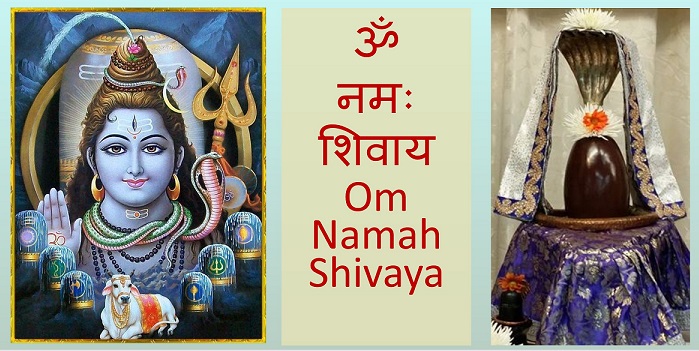Lord Shiva – Lord of the Universe

Shiva is the third god in the Hindu triumvirate. The triumvirate consists of three gods who are responsible for the creation, upkeep, and destruction of the world.
Shiva is the last deity of the Hindu Trinity. He is responsible for the dissolution of the universe. Literally, Shiva is one in whom the universe “sleeps” after the destruction and before the next cycle of creation.
All that is born must die. All that is produced must disintegrate and be destroyed. This law cannot be violated. The principle that brings about this disintegration, the power behind this destruction, is Shiva.
Another explanation of his role as a destroyer is that we invoke Shiva to give us the capacity to destroy all our attachments and unwanted thoughts.
Suggested Read: Shiv Chalisa
Let us try to understand Shiva from different standpoints. From the highest standpoint, Shiva is the formless, Absolute reality. Shiva’s name itself means auspiciousness. This is our own true nature.
From the cosmic standpoint, Shiva represents the Lord of the Universe – the creator, sustainer, and destroyer of the world.
From the departmental standpoint, we worship Brahma for creation, Vishnu for sustenance, and Shiva for destruction. Since there can be no destruction without creation and vice versa, we cannot attribute creation to one deity and destruction to the other. Our distinction between these three powers is merely to help clarify the various processes of life.
In another aspect, as a particular form that manifested on earth, Shiva is said to have appeared in numerous incarnations as an enlightened master (Guru) who teaches the knowledge of the Self to his disciples. This form is known as Dakshinamurthy.
Suggested Read: Lord Shiva Aarti
One explanation for Ganga sitting on the head of Shiva is that we should learn to keep the head cool and win the world. This is possible only through knowledge and devotion.
On Shiva’s forehead is the crescent moon and in his neck is poison. The former represents the nectar of life and the latter, death. The pair of opposites indicate that we should be able to accept pain as well as pleasure in life and that we should have inner balance and equipoise in the midst of all good and bad experiences.
The poison, kept in his neck, without being swallowed, is significant. He did not become poisonous or bitter himself. In the same way, one should be able to go through all experiences of life and still abide in his own true nature, without becoming bitter.
A snake garland adorns his neck. The snake represents the mind that spits out its poison of negative thoughts. Yet if we keep the mind under perfect control so that it is quite within and does not agitate us or others, it will lie peacefully in meditation.
The ashes all over his body indicate that our bodies will turn to ashes one day and hence we should rise above the identification with the body even while we are living.
Suggested Read: Shiva Ashtakam
He is three-eyed. The third eye located between the eyebrows is the eye of wisdom while the other two represent love and justice. Thus Shiva exemplifies a good ruler who has both love and justice and also looks at this world with the vision of Knowledge that destroys all ignorance and passion.
Shiva is also called Bhramhan which can also be said as Parabhramhan. Shiva means nothingness. The word shivoham means the consciousness of one individual, the lord says that he is omnipotent, omnipresent, as he is present in the form of one’s consciousness.
Nataraja is the only form of Shiva worshipped in a human figure format. Elsewhere he is worshipped in Lingam’s figure. He is the source of fertility in all living beings. He bestows prosperity on worshipers. As Rudra, he destroys evil and sorrow. As Shankara, he is the doer of good. As Mahadeva, he is the ‘overlord’ of the universe. As Mrityunjaya, he is the conqueror of death.
As Nataraja, he is a Divine Dancer who performs Taandava Nritya (Cosmic Dance) producing frequencies of vibration corresponding to all manifestation. The iconic representation of Shiva in the form of Lingam (a symbol of the ultimate reality) is held in reverence in all Shiva temples.
Suggested Read: A Surprising Facts About Shiva Temples
